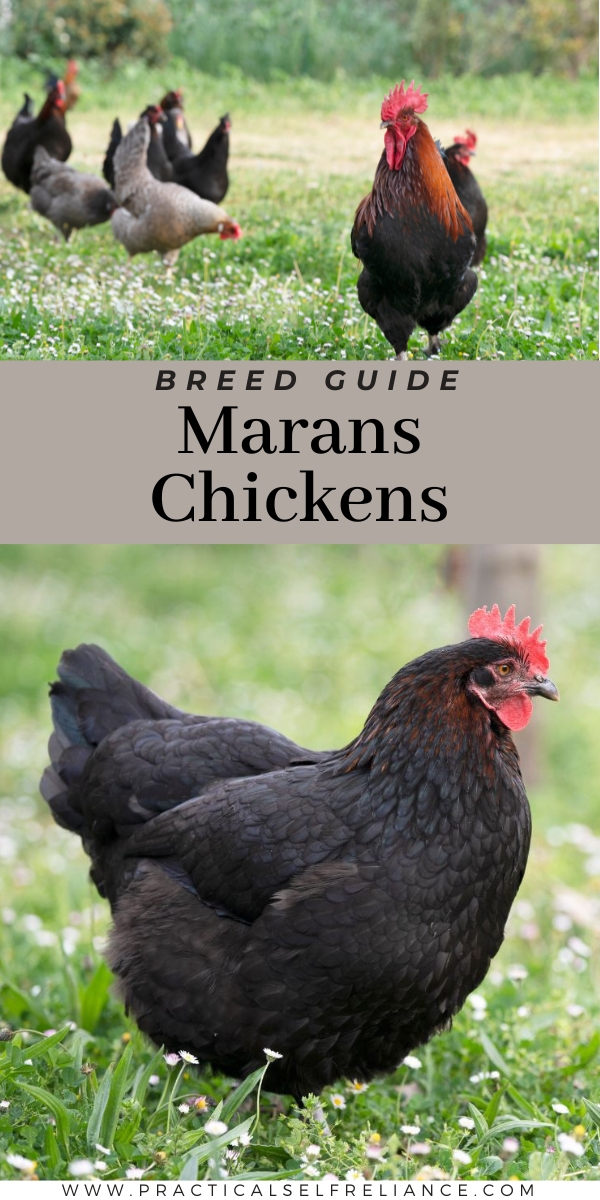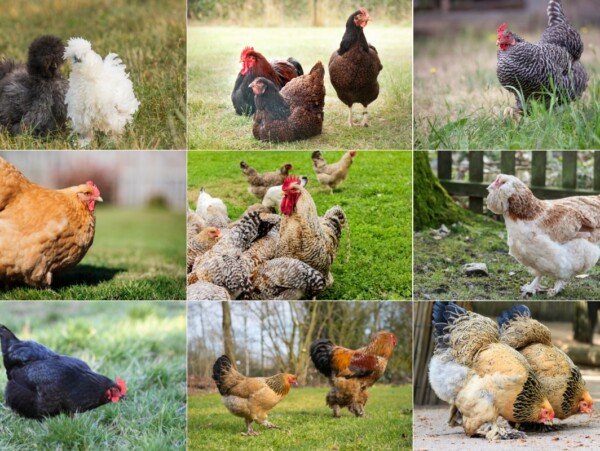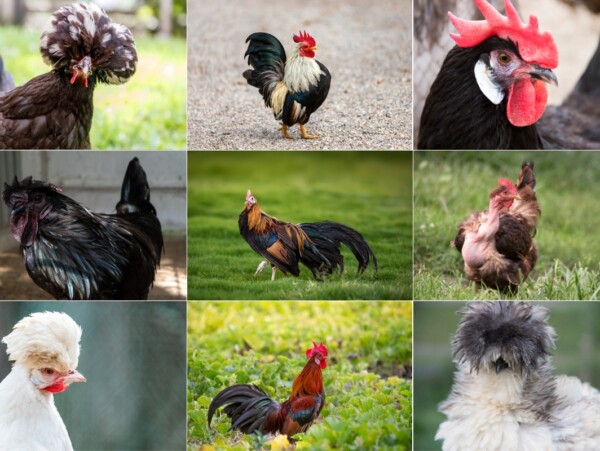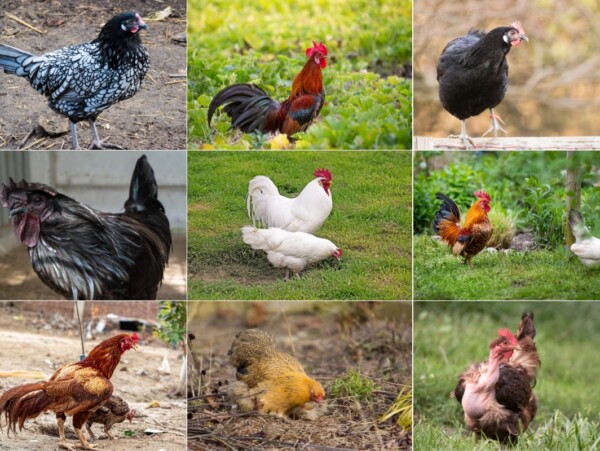Affiliate disclosure: This post may contain affiliate links. Please see our Privacy Policy.
You’ll have this bird eating out of your hand in no time, literally! Friendly and calm, the Marans chicken is a dual-purpose breed famous for its dark chocolate-colored eggs. If you’re looking for a comfortable addition to your flock or backyard, Marans’ varieties abound!
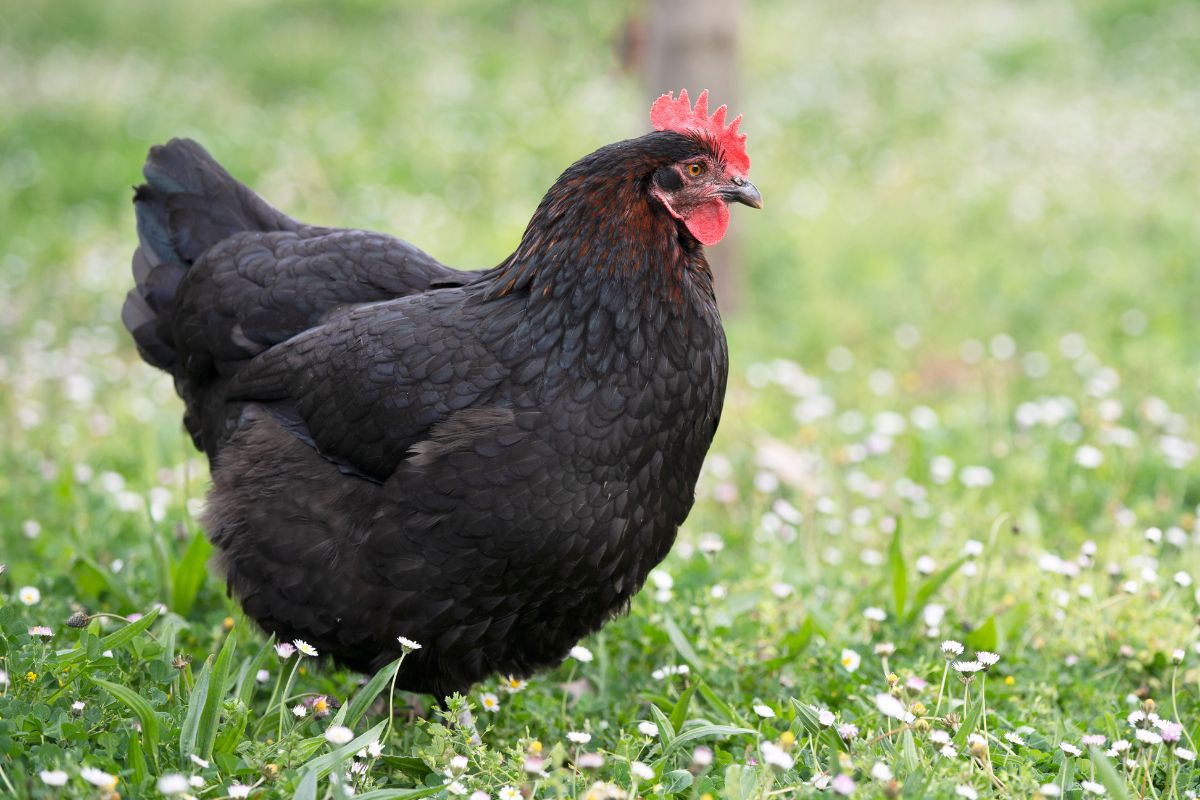
Table of Contents
We added marans to our flock this year, in an effort to round out the colors in our “rainbow egg basket.”
These beauties lay distinctive dark brown (or chocolate brown) eggs, and they’re known for their friendly personality.
We’ve found that while they’re friendly and will follow you around the yard clucking excitedly, they don’t especially love to be handled or touched, much to my kid’s disappointment. Still, most people are happy enough to have a friendly chicken follow them for treats, and don’t mind all that much that you can’t pick them up or pet them easily.
They’re also rather boisterous, both the hens and roosters, so they’re not the best for urban chicken keepers. We’re back in the woods on 30 arcres in rural Vermont, so that’s less of an issue.
Be aware that they’re not as cold-hardy as some breeds, and they do tend to get frostbite easily. Keep that in mind if you’re in a northern climate.
This breed comes in more than a dozen feather colors, so you could have a really unique backyard flock…while having all the same breed on paper.
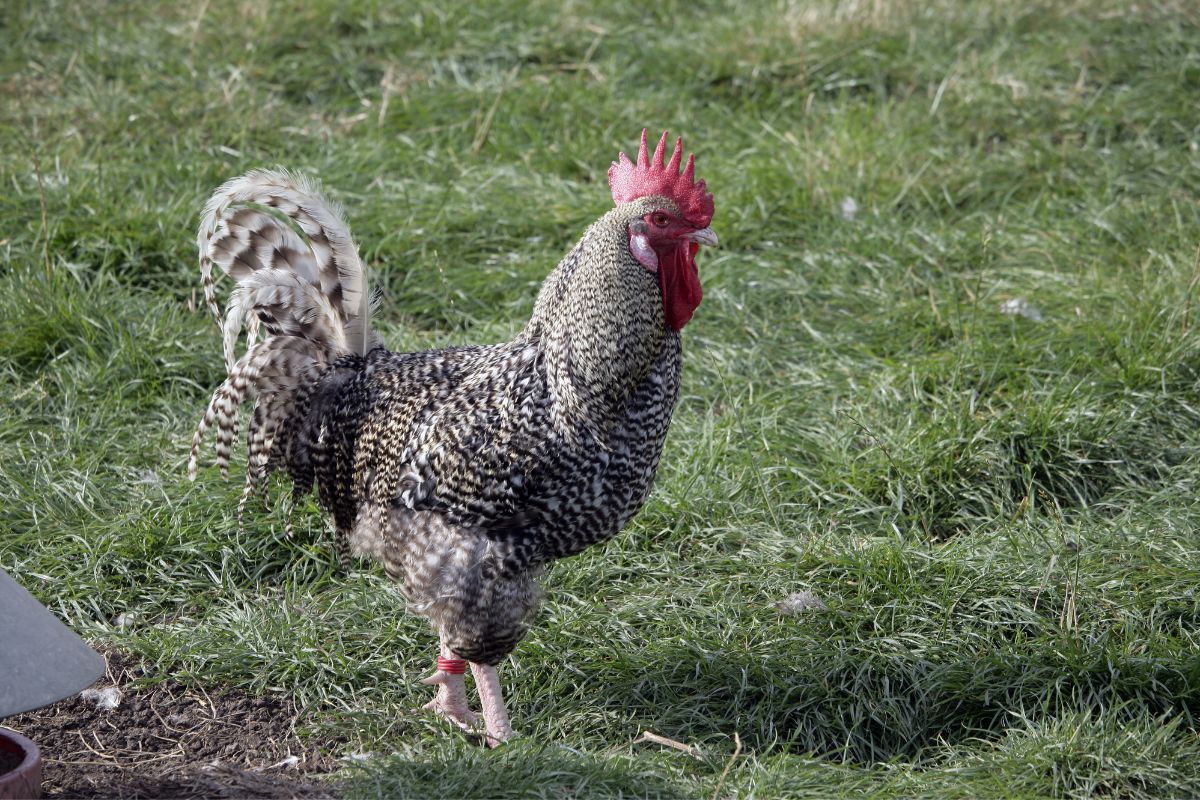
What are Marans Chickens?
Officially, this breed began to emerge in the early 1800s. Traditionally, however, it began as far back as the 1300s when French farmers began breeding marsh hens and gamecocks. Named after the port city of Marans, these chickens are thought to be a cross between Brahmas, Langshans, and possibly Faverolles.
As a dual-purpose breed, you’ll find Marans to be a wide-shouldered bird that produces plenty of meat and eggs. Their feathers are short, rigid and don’t have much fluff to them. Depending on their origin, it’s possible to find Marans with and without feathered legs and toes.
Pros and Cons of Marans Chickens
While these birds lay beautiful eggs, they also have some drawbacks. Here are the pros and cons of Marans at a glance:
Pros
- Excellent foragers
- Beautiful eggs
- Good layers
- Tasty meat
- Friendly
Cons
- Expensive Chicks
- Frostbite prone
- Don’t enjoy handling
- Fewer Eggs per Year than Production Breeds
Marans Chicken Characteristics
A gentle breed, these chickens prefer not to be handled too much. While many do tolerate it, they’ll be much happier following you around the yard or even eating snacks out of your hand. They enjoy foraging and the company of other birds in a mixed flock.
Comfortable with cold weather, they can also handle a decent amount of heat. They’re famous for their egg production but produce tender and flavorful meat as well. It can take longer on average for Marans to reach table-weight with roosters growing to about 8 pounds and hens to 6.5 pounds. Hens in this breed will begin laying at around 5-6 months of age.
- Breed Name: Marans (Pronounced: MUH-RAN the “s” is always present but usually silent)
- Breed Type: Continental
- Temperament: Friendly
- Size: Medium
- Eggs Per Year: 150-200
- Egg Size: Large
- Egg Color: Chocolate to russet brown
- Lifespan: about 8 years
- Time To Maturity: 5-6 months
Marans Breed Standard
Perhaps most easily recognizable for their tight feathering and smooth faces, these are a well rounded chicken in shape. Combs are single and medium-sized, while their earlobes and wattles are about average in size. Bright, clear eyes that don’t ever show brown or yellow are a hallmark of the breed.
Chicks are not autosexing, and vent sexing is particularly difficult for Marans. It’s likely that purchasing a chick before it’s mature can result in a possible hen turning out to be a rooster. Our batch of 7 “hens” ended up including 3 roosters.
Many, many varieties of the Marans chicken exist. Below are listed the 4 standardized by the American Poultry Association along with the most common variety in the US. The American standard follows the French and those 4 breeds all have feathered legs.
Any varieties listed can be found with clean legs or not.
Marans Colors
This particular breed comes in an amazing array of colors.
Black
Striking in its all black feathers, you’ll not find any patterns or alternate colors mixed in with them. While the occasional beetle-green iridescence has been seen on some of them, it isn’t common.

Black Copper
Similar to the all-black variety, you’ll be able to tell the difference by looking for a necklace of copper feathers around their necks. Of all Marans, these are most well-known for laying the darkest brown eggs.
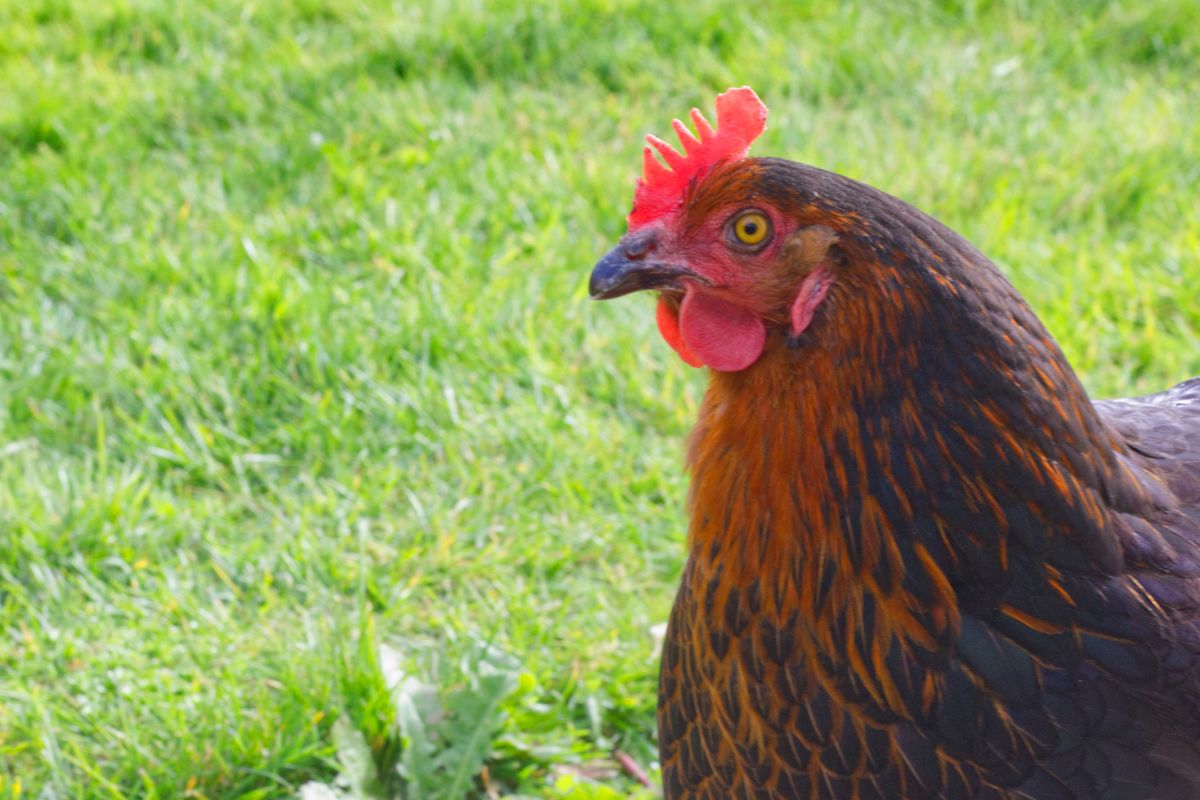
Wheaten
Males in this variety have a gold cape and a characteristic golden “V” on their backs when their wings are folded. Females tend to be mostly mahogany colored with a golden head and wheaten under-fluff.
White
You’ll find the cleanest white-colored feathers of any chicken in this variety. On occasion, males will have a bit of yellow, brown or black around their neck or shoulders, but it isn’t common. Their eyes tend towards a clean red or orange color.
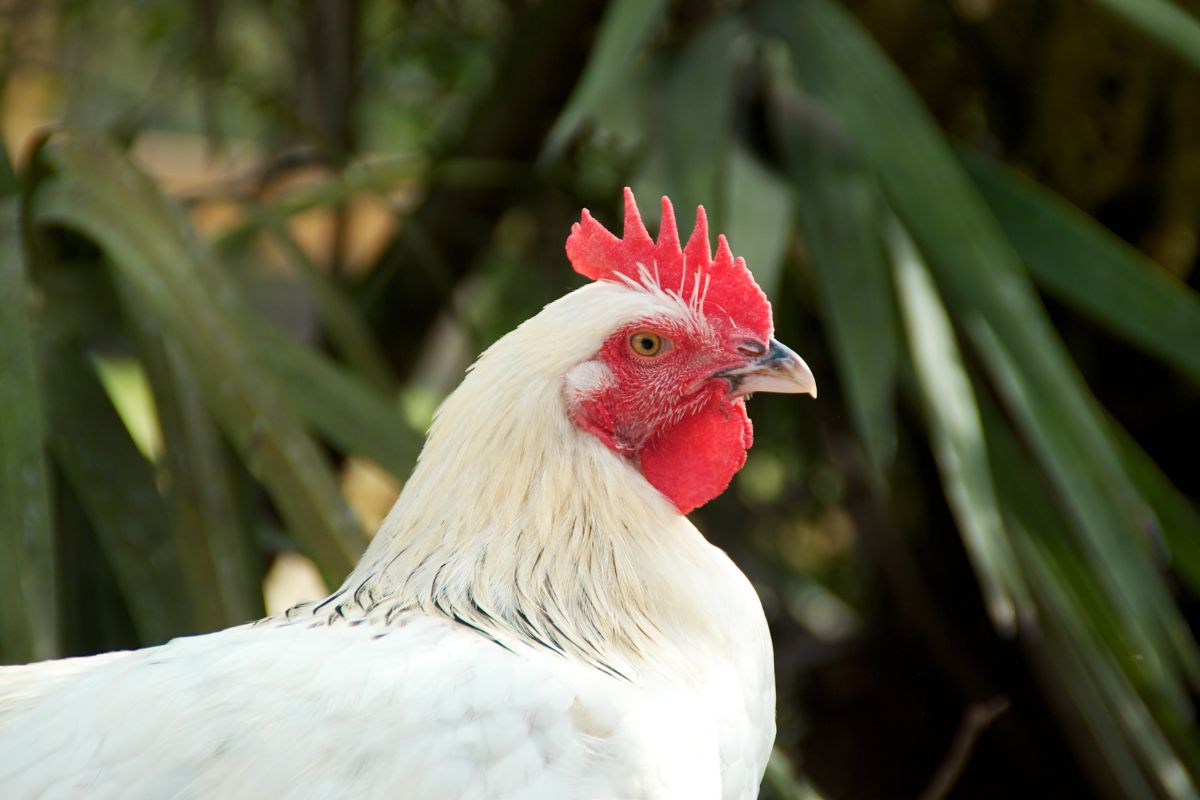
Cuckoo (Not standardized by the APA)
The most patterned variety listed here, the Cuckoo has black feathers barred with white or slate gray. As an English breed, it has clean, pale legs and toes.
While this is not technically a standard marans color, it is one of the most commonly available in the US.
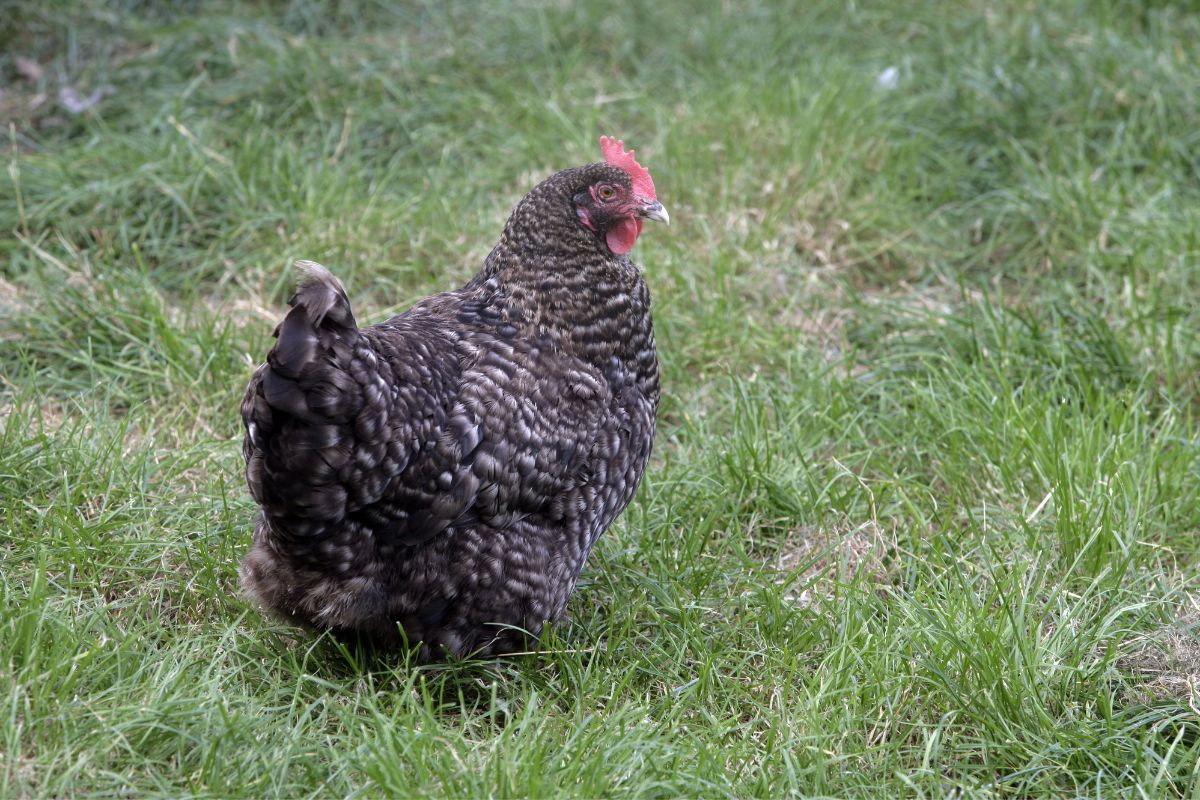
Other Marans Colors
If you’re interested in other colorations, less common options in the US include: Birchen, Black-Tailed Buff, Blue, Blue Copper, Blue Wheaten, Brown Red, Columbian, Golden Cuckoo, Salmon, and Silver Cuckoo.
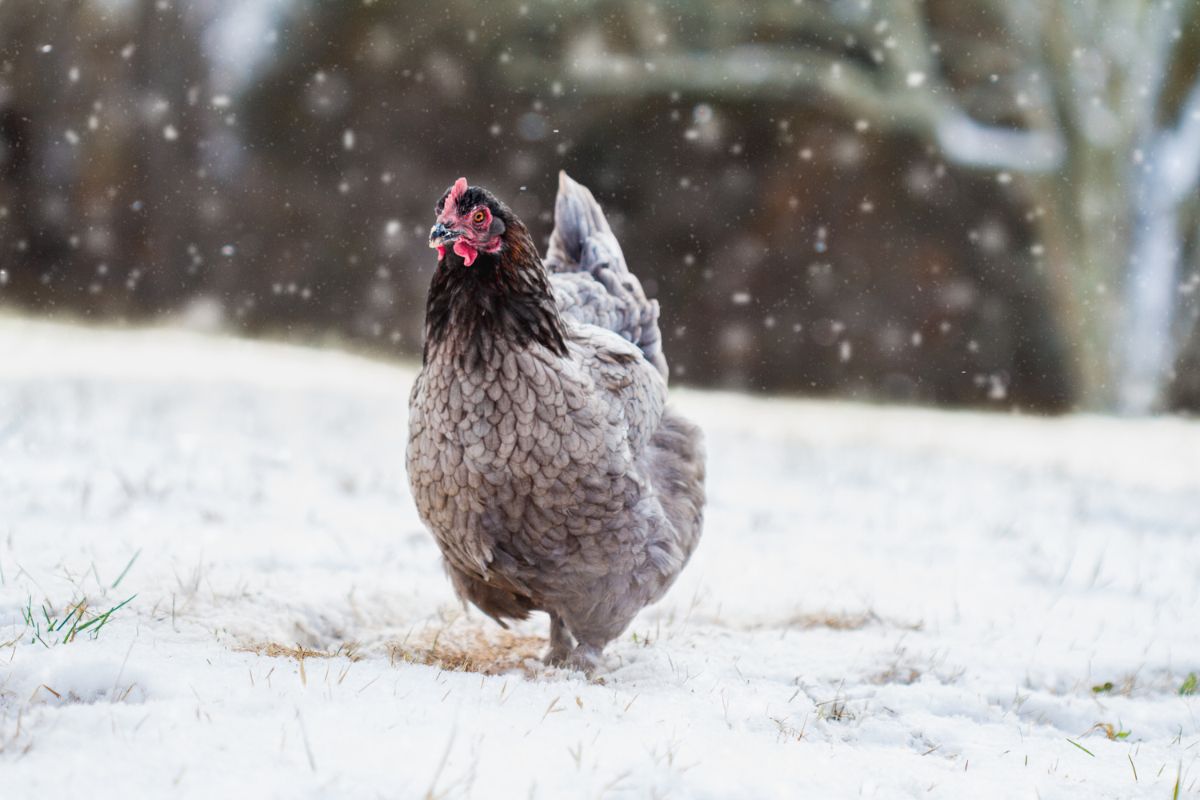
Temperament
A friendly bird, you’ll find them easy to get along with and easy to mix into an established flock. Little ones may need to be cautioned not to pick them up too often or they may fight to escape.
Roosters in this breed are docile but alert. They’ll give warning about any nearby predators but aren’t likely to show aggression.
Hardiness
Best in moderate temperatures, you’ll find they do well in either cold or warm weather. In any climate, though, they will need plenty of cool, clear water to encourage them to stay hydrated.
The large combs, especially on roosters, are prone to frostbite in northern climates.

Egg Production
They are great egg producers! You’ll find hens lay about 2-3 eggs per week, with some hens laying up to 200 eggs per year. Hens that lay dark eggs do tend to lay less than average. So, if you’re looking to add that Dark Chocolate egg to your basket, plan accordingly!
Egg Color
Hens lay dark chocolate or russet-colored eggs. This will vary a bit from hen to hen and across varieties.
Meat
Tender and juicy meat means they are a solid choice for your table. It can take up to 5-6 months for them to reach full size and they will eat a lot during that time! Foraging can help to cut down on some feeding costs but won’t eliminate them.
Broodiness
Most of your hens won’t become broody at any point. Don’t worry if you find one has—they’re an easy breed to break of the habit.
Letting your hens hatch their eggs will show that these chickens are also excellent mothers!

Foraging Ability
Excellent! While not an excitable breed, Marans are active and enjoy foraging for most of their food. Both hens and roosters will keep a careful eye out for predators.
However, they aren’t an aggressive breed, and they’ll want somewhere safe to run to, rather than choosing to fight.
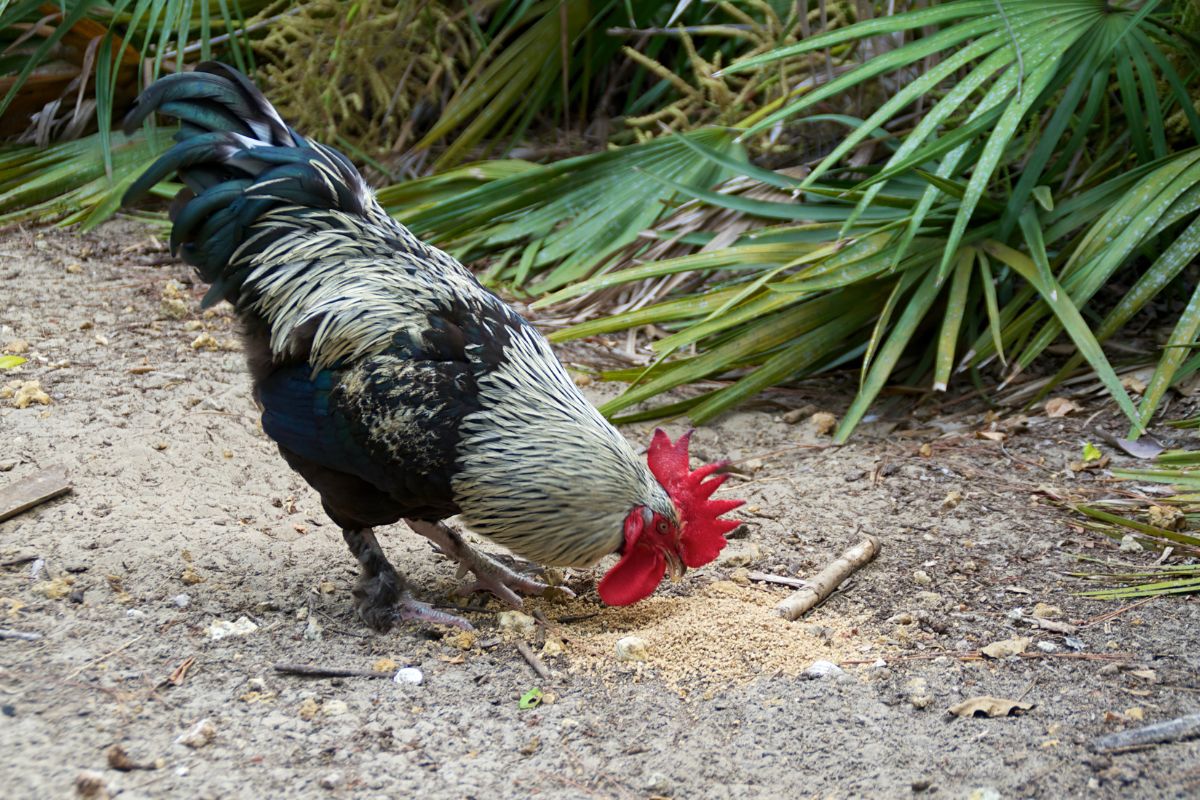
Cross Breeds
As a centuries-old breed, the best guess is that Marans are a cross of Brahmas, Langshans, and possibly Faverolles.
Common Health Issues
No diseases are known to target Marans. If you live somewhere that regularly gets snow, keep an eye on their combs as they are prone to frostbite.
For US standard or French varieties, make sure to regularly check their feathered legs for scaly leg mite and other pests. Their legs may also pick up mud and droppings.
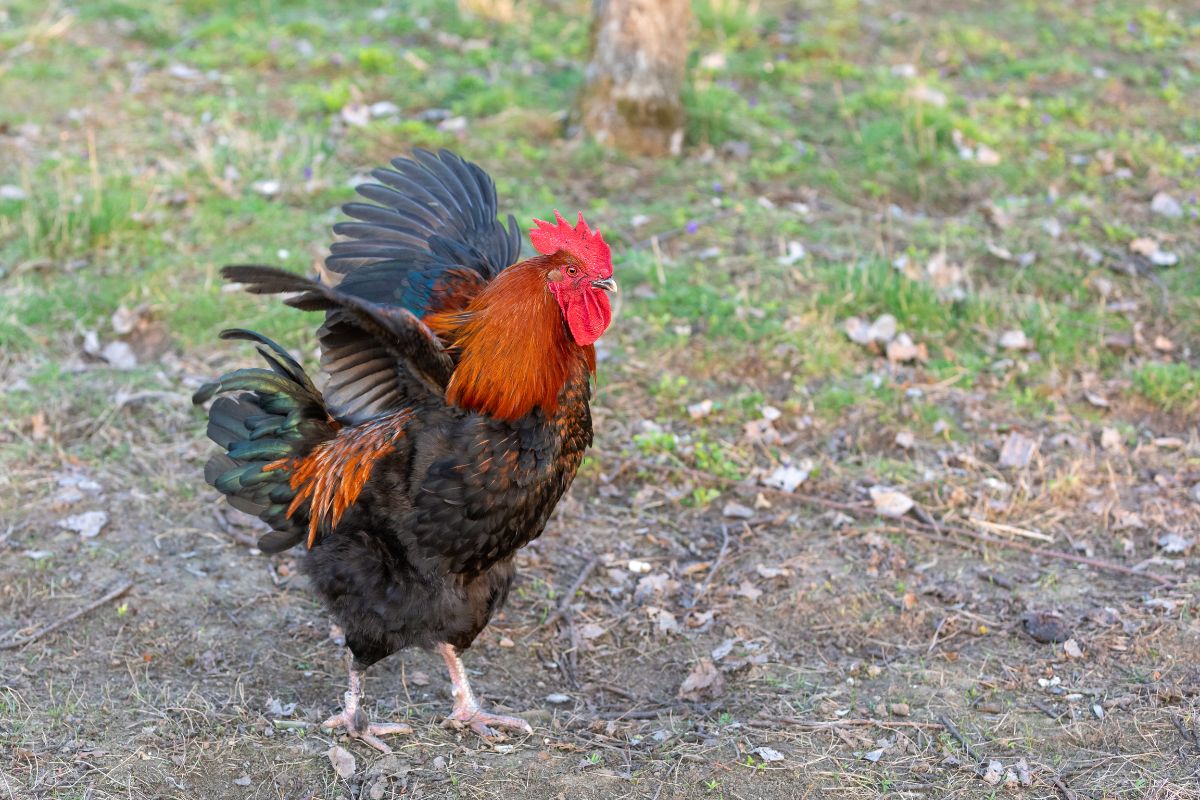
Tips for Raising Marans Chickens
Marans make for a solid beginner’s choice. They’re friendly and docile. And they’ll stay healthy on a simple care plan.
Even though they’re a foraging breed, you’ll find they do well in confinement. The usual recommendation of 4 square feet of space per bird holds for them. However, they’ll do better the more space you can give them, particularly for their runs.
With French varieties, make sure to provide dry sand bedding and check it regularly. This will help make sure their legs stay clean. In addition to checking for mites and pests, cleaning your chickens’ legs regularly will help keep them healthy.
Marans Chicken FAQ
More questions? There are some more answers below!
To a point. French varieties also pick up snow on their legs that will need to be dried promptly to avoid frostbite. Combs in all Marans varieties are also prone to frostbite.
On average, a Marans will live 8 years. Hens will start laying around 5-6 months old and will keep laying until 5-6 years old. As your hens age, their eggs will lighten over time.
Yes, they enjoy company. Most won’t enjoy being held but will tolerate it if treated gently.
Yes! Each hen will lay anywhere from 150-200 eggs for you per year. Though you’ll find that hens with darker colored eggs will lay less than others in the breed.
A dark chocolate to russet colored egg. Some owners who have prioritized hens who lay more often have reported the eggs will often be just a bit darker than a Rhode Island Red’s.
They can be, but you can train it out of them easily. Letting your hens hatch their eggs is also a great option as they make good mothers to their chicks.
Marans are medium-sized chickens. Roosters will get up to about 8 pounds and hens will average about 6.5 pounds.
Very good eating, you’ll find they give a solid amount of flavorful breast meat. Be aware, though, raising these chickens exclusively for meat will be pricier than breeds—it can take up to 6 months for them to mature.
No, the chicks for both the English and French standards are not autosexing. Vent sexing for the French varieties (with feathered legs) is more difficult and less accurate.
Yes, Marans are a beginner-friendly bird. They will want space to forage, which may be the biggest obstacle you’ll find to incorporating them.
Ensuring their nest areas are clean and dry will keep them healthy. From there, check in on their feathers for pests and cleanliness.
Chicks will want a high protein mash—up to 20%—until 16 weeks when it can scale down to 16%. Laying hens will want a bit of calcium in their diets regularly.
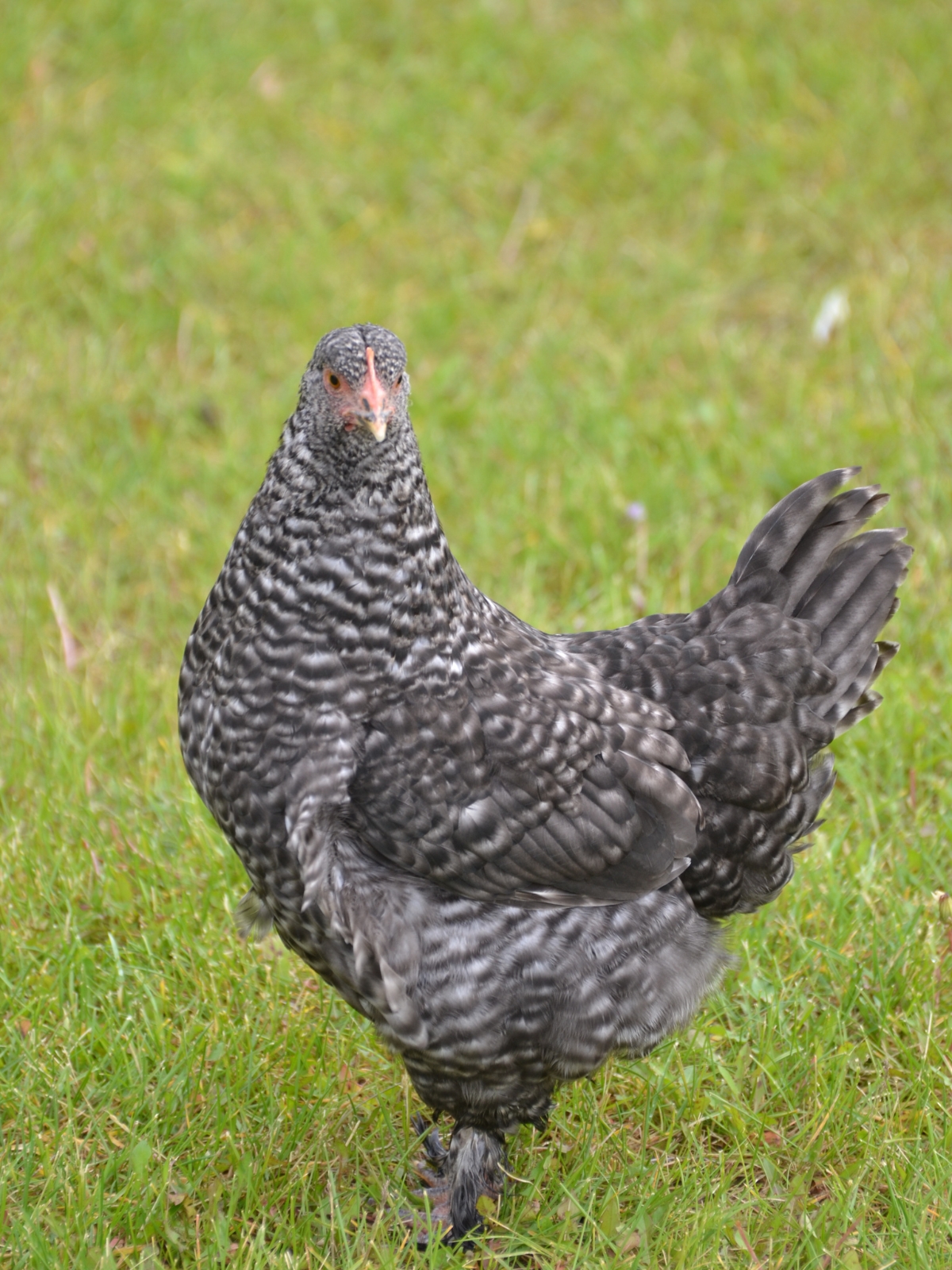
Chicken Breed Guides
Looking for more chicken breed guides?
- Salmon Faverolle Chickens
- Barnevelder Chickens
- Jersey Giant Chickens
- Bielefelder Chickens
- Orpington Chickens
